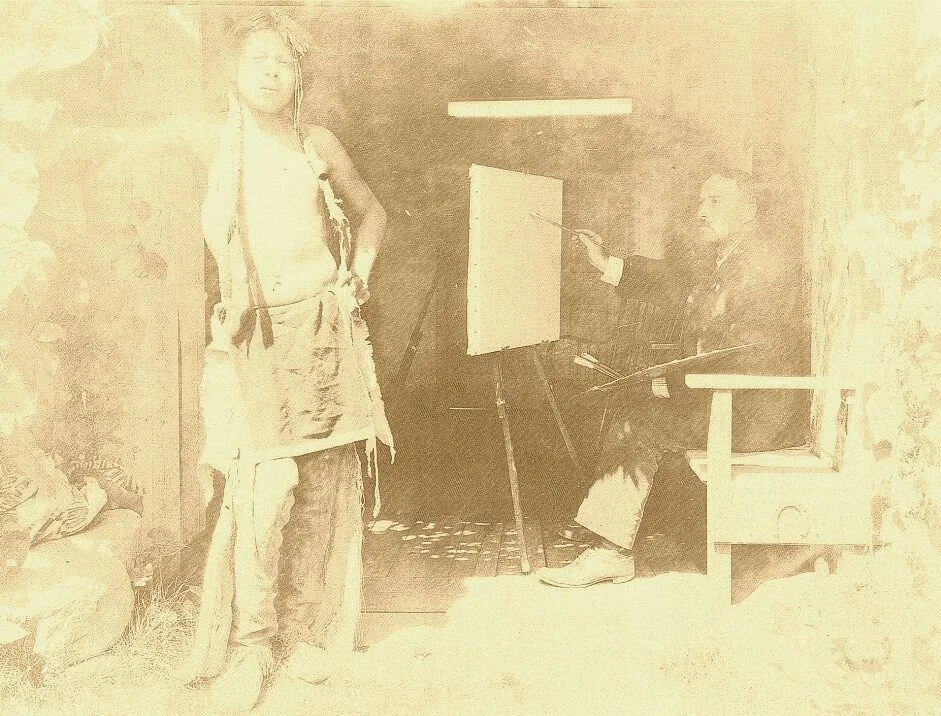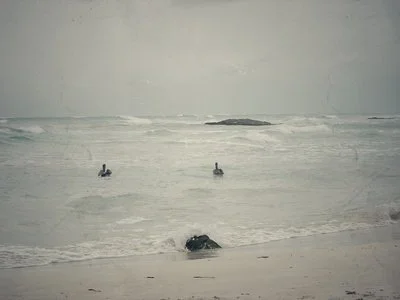Leaving It All Behind
To the outside world we had a beautiful life. There we were, living happily with our children in our lovely suburban home. We had interesting friends. What would possess us to leave it all and hit the road? But that’s what we did, launching ourselves into points unknown in the big red truck we bought to replace the suburban station wagon. It also replaced the 4 bedroom 2-1/2 bath home with a cab-over camper that provided just enough space for five people to sleep. Only one person, even if it was a child, was able to walk about at a time.
What we had in mind was simply to begin our personal odyssey with the ultimate destination unknown. Anyone can do it. Despite prevailing opinion, it doesn’t take much, just the initial decision to find another way. That’s how the travel plan began. Leaving all the details open allowed us to experience adventures that we never could have conceived of. That’s how the travel plan unfolds, if you make the space. Our previous lives were now lost and gone forever and we had embarked on a new one.
This one ultimately took us from suburban south shore of Long Island to the sparsely populated area of the Yucatan Peninsula of Mexico. Not one of us spoke Spanish, but we ended up living there for several months, most of it on an isolated beach, on what was later to develop as Playa del Carmen.
A rustic highway sign indicated that the beach was two kilometers along a hand-hewn path cut by machete by one of the few families who lived there. When we lumbered down it, surrounded closely on both sides by jungle growth, the over-sized big red truck threatening to capsize every time we hit a bump, we all peered excitedly out the windows, anticipating the imminent sight of the water. Two kilometers? Hardly. But when we finally saw the beach and the ocean, they were breathtaking. Our collective gasp expressed the unanimous thought that the harrowing ride was worth it. We had no idea of what would come next, but we knew it would be an adventure.
It was like stepping onto the set of a movie, and we were virtually the only members of the cast although there were a few supporting players. Pristine white sand beaches and the multi-hued colors of the Caribbean were the backdrop. Coconut palms provided the foreground. Using that as our base, we wandered out occasionally to visit other areas in the region. Tulum, the magnificent archaeological site built on the land directly overlooking the Caribbean, was barely open to the public, and the same was true of Chichen Itza.
Once in a while we visited the beautiful caletas, breaks in the limestone formation, where the water pooled and provided homes for myriad, multi colored fish. Later, this area was to develop as Xcaret, a major theme park. And, there was no development of any kind along the entire area which was later to be known as the Riviera Maya.
Closer to home, the men in our little enclave would go out into the swamps accompanied by our friend and guide, Alonso Puerto. Also known as “Azul” because of his blue eyes, he was well known along the Yucatan coast as a hunter and fisherman. Although our small group came from different parts of the U.S., with various backgrounds, what we had in common was the openness to whatever adventure unfolded, including alligator hunts in the swamps.
There was always lots of fresh fish, but not much else. One of the culinary highlights was to go to the cafeteria at the bus station in Puerto Juarez outside of what was to become the city of Cancun. There, we would have carnitas (chunks of deep fried pork) with rice and beans. Sometimes we’d drive down the road along the narrow spit of land to where the ferry departed for Isla Mujeres and enjoy the ride over to the island. Along the way, we would pass fisherman and we occasionally stopped to see if they had any fresh lobster for sale. On the way back, we’d go to the Pink Store, called that because of the color of the walls of the building. There we’d get our ice to take back to the beach. The Pink Store and the gasolinera were the only business establishments in the area. Cancun was yet to be built.
Living almost entirely outdoors during those months on the beach changed our perception of what life could be like. Dinners cooked nightly around a campfire became the way we ate. Swimming in the warm waters of the Caribbean was our daily activity. Searching for treasures, like sea coral or bottles that had washed up along the shore, was an adventure, as exciting as visiting the ruins, so many things that seemed waiting for us to discover.
The kinds of adventures we had, the unusual life my children experienced during those months, were the rewards for the risk we took when we left our safe, suburban life. The Yucatan has changed dramatically during the intervening decades and I am eternally grateful that we got to explore an area of stupendous natural beauty and visit ancient sites of the Maya that are household names today. None of it would have been possible if we hadn’t taken a leap into the unknown. It was a lesson that has served me well throughout my life.
Susanna Starr is an entrepreneur, photographer, speaker, artist, writer, and traveler and holds a degree in philosophy from Stony Brook State University of New York. Susanna has over twenty years experience in the hospitality business as owner of Rancho Encantado, an eco-resort and spa in Mexico. She has lived in Northern New Mexico for more than thirty five years, lives in her home in the Yucatan Peninsula of Mexico for a good part of every year and has traveled throughout Latin America. Susanna is the author of the book: FiftyandBeyond: NewBeginningsinHealthandWell-Being her blogs may be found here and here. She contributes to the Examiner, Global Writes, Eons and Let Life In, among other publications. She has also spoken extensively on Global Talk Radio.
photo credits: red truck (istockphoto.com), all other images courtesy the author.







